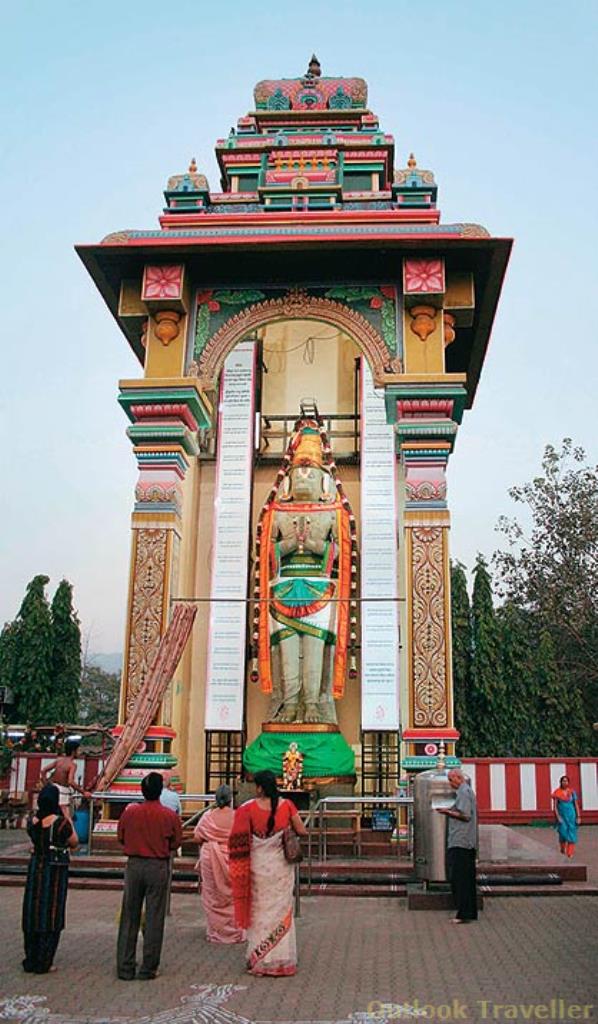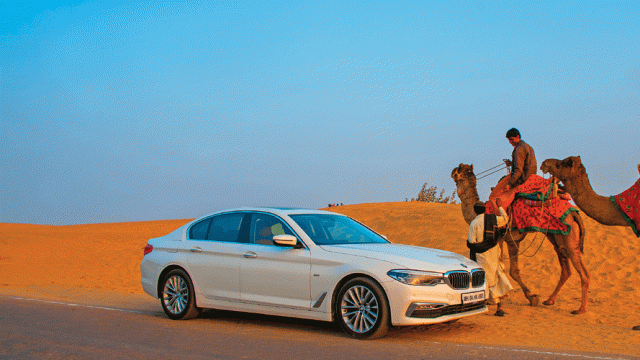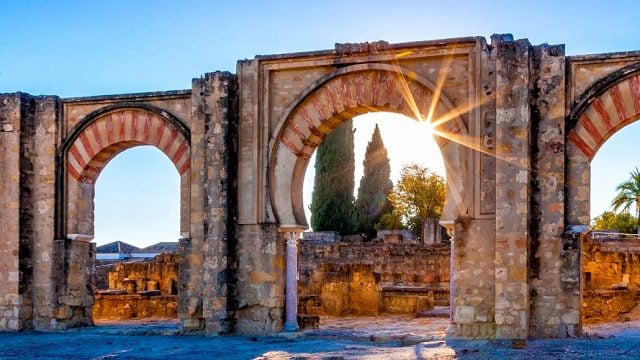How many cities in India have railway stations that double up as tourist attractions? Or
The satellite city of Navi Mumbai was planned with the objective of decongesting Mumbai. Although the town planning agency, Cidco, began the work of acquiring land for 14 proposed nodes way back in 1965, development work was initially restricted to the Vashi node. In 1992, the sparkling white edifice of Vashi Railway Station marked the arrival of Navi Mumbai. There are now 29 railway stations here, the combined construction cost of which adds up to about Rs 900 crore.
That price is clearly well worth it, for these stations are quickly becoming a favourite of Bollywood location hunters. Koparkhairane station featured in the Shilpa Shetty-Shiney Ahuja romance in Life in a Metro. Suniel Shetty shot at Juinagar, Salman Khan bashed up baddies at Turbhe station and Aamir Khan shot parts of Fanaa in Panvel. Each station has its own distinct architecture: from the superdome structure of Turbhe to the wacky exterior of Ghansoli.
All of Navi Mumbai, in fact, has delightful architectural sights, from grand roundabouts, like the one at Utsav Chowk in Kharghar to triangular or circular high rises. The immaculately landscaped IT parks and technology enclaves, with their glass-and-chrome edifices house lakhs of new-economy workers. The one that’s especially worth a dekko is the IT district on the Thane-Belapur road. It houses the corporate headquarters of the Ambani brothers — Mukesh Ambani’s Corporate City and Anil Ambani’s Knowledge City.
A detour from this stretch will take you to one of the finest toll-free roads in the country: the 20km-long, eight-lane Palm Beach Road, with beautiful high-rises on one side and the mangrove-lined seafront on the other. Since bikers are not allowed on the Mumbai-Pune expressway, this is where you’re likely to find them burning the rubber on their Hayabusas and Ninjas.
There’s enough retail therapy to be had too. The Vashi node alone has five sprawling malls, the biggest of which, Inorbit, is spread across 550,000 sq feet.
But the star attraction in the city’s state-of-the-art structures is the D.Y. Patil Cricket Stadium, surfaced with South African soil and made largely with imported materials. The lush outfield, colourful stands and massive light towers make this the pride of the satellite city.
For all the hectic pace of construction, though, bits and pieces of history have survived the 40 years of Navi Mumbai’s expansion. Chief among these is the Belapur fort on the junction of Palm Beach Road and Uran Road. It is a 15th-century fort overlooking the Panvel creek, seemingly undisturbed by the modern wonders around it. The fort was built by the Siddis of Janjira and was captured first by the Portuguese, then the Marathas and finally, in the early 19th century, by the East India Company.
During its heyday, there were hundreds of soldiers and administrative officials stationed here. Legend has it that there is an underground — and undersea — tunnel that leads from the fort right up to the Gharapuri island, which is the site of the Elephanta Caves. The local administration has now earmarked a substantial sum for the restoration and development of Belapur fort.
Also of interest is the salt depot near Nerul lake. This depot was built by the East India Company in the 18th century to assemble salt from the entire region and pack it for export back home.
Navi Mumbai’s town planners seem to have had a regard not only for the area’s history, but also the beauty of its forests. An example of this is CBD-Belapur’s Urban Haat project, designed along the lines of Dilli Haat in Delhi. The Haat has been built upon a hill with minimum disturbance to the eco-zone that surrounds it. With its rustic charm and lively atmosphere (and shopping opportunities), the Haat is now one of the satellite city’s most happening destinations.
Bird-watchers must visit the Kharghar hills and Belapur woods, where they can sight as many as 60 species, including woodpeckers, Himalayan thrush, golden orioles, minivets, barbets, green owls, drongoes, flowerpeckers and petronias.
The most breathtaking sight, though, is of hundreds of greater flamingoes pecking for food in the mud flats of Thane creek, along the seven-kilometre stretch from Vashi to Ghansoli. These migratory birds used to fly to the Sewri mudflats in Mumbai till a few years ago, but have now made the coastline of Navi Mumbai their seasonal home. For the best view of these flamingoes, rope in the services of one of the fishermen at Vashi (about Rs 300) and float down the coast to the nesting site of the birds. It’s worth a trip to Navi Mumbai just to watch them in full flight. The flamingoes stay until the rains hit Navi Mumbai in May or June, and then they head to the Rann of Kutch.
If merely watching birds is too passive for you, drive through the dense forest of Parsik hill — the road is beautiful, and it’s a great way to wind down after the pace of the city.
The information
Getting there: If you want to witness the contrast between old and new Mumbai, a local train on the Harbour line from CST Terminus to Vashi station is your best bet. As soon as the train leaves Mankhurd station — the last one within Mumbai city limits — the landscape opens up, the breeze picks up and the train cuts through lush green mangroves, glides over the sprawling Thane creek and, before you know it, you are at Vashi station, which has the feel of an airport rather than a railway station. The 30km journey takes 50 minutes.
Where to stay: If mall crawling and sprinting across nodes is high on your agenda, take your pick from the two five-stars that stand bang in the middle of Vashi’s mall district: Tunga Regency (022- 66801818, www.tungahotels.com) and Four Points Sheraton (27817777, www.fourpoints.com), both starting at Rs 5,000 per night. A couple of kilometres away on Palm Beach Road are Fortune Select Exotica (from Rs 7,000; 39884444, www.fortunehotels.in) and the more affordable Celebrations (from Rs 3,500; 27800405, www.celebrationss.com) and Supreme Heritage (from Rs 3,000; 27650580, www.hotelsupremeheritage.com). The Park at CBD Belapur (from Rs 6,000; 67589000, www.theparkhotels.com), nestled in the foothills of Belapur hills, is a more easy-paced place to stay. The just-opened Royal Orchid (022-41712345, www.royalorchidhotels.com) is a great mid-range option at Rs 3,000. For budget travellers, the best bets are Venkat Presidency at Kamothe (Rs 1,500; 27424848), Abbott at Vashi (Rs 1,200; 27826677) and the state guesthouse of Kerala (27810106; open to everyone), all of which offer clean and comfortable rooms for less than Rs 1,000.
Temple Town: If a bunch of intricately carved places of worship make a pilgrimage destination, Navi Mumbai should qualify as one. The city allocates a religious bay in every node. Here, temples, gurudwaras, mosques and churches stand close together. Of all these religious centres, the most monumental is the Nerul node, which has its own ‘saat dhaam yatra’. Start at the Balaji temple from where you get a spectacular view of the Palm Beach stretch (even South Mumbai on a clear day) and proceed to Datta mandir and Jain temple in Sector 15, and onward to the Shani and Ayyappa temples in Sector 11, winding up at the Kamakshi temple in Sector 1. The final stop on the circuit is the Hanuman temple at the SIES complex, which has an impressive 10-metre-tall stone idol of Hanuman.
Navi Mumbai
Vashi
Leave a Reply
You must be logged in to post a comment.





